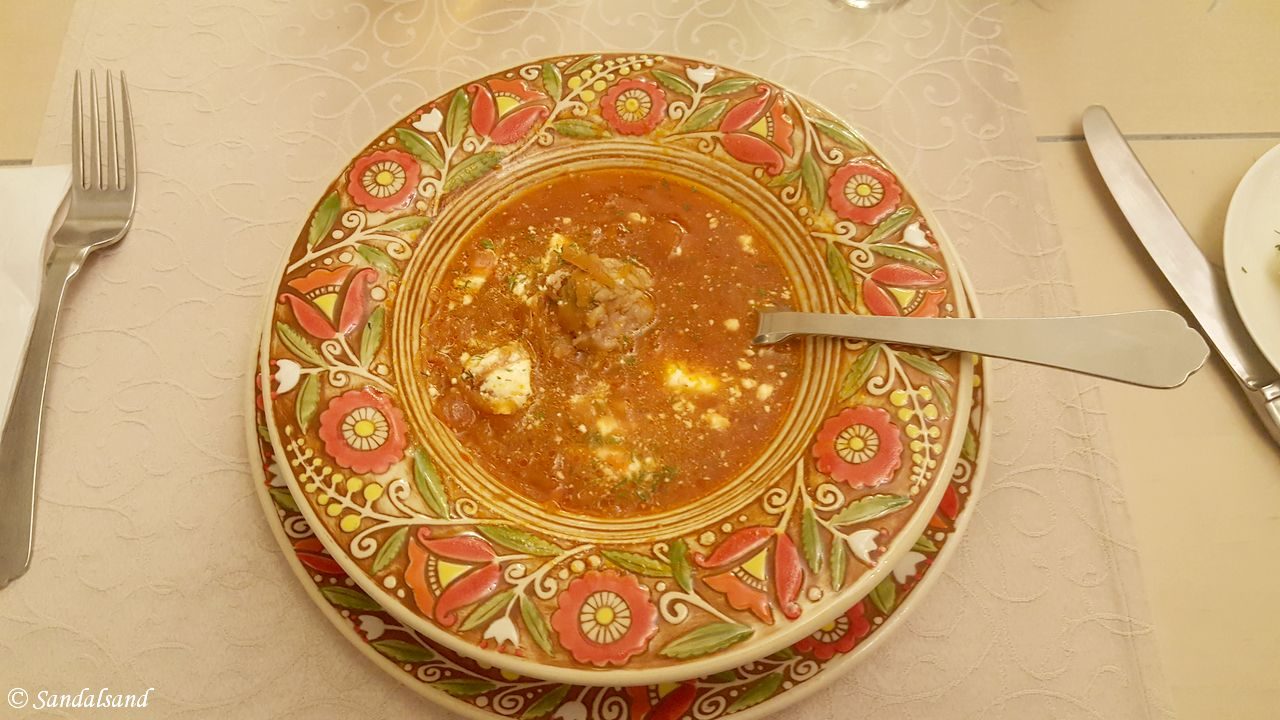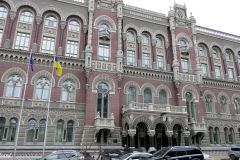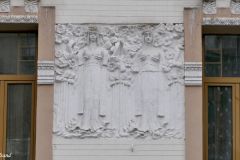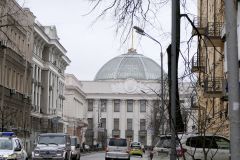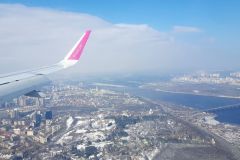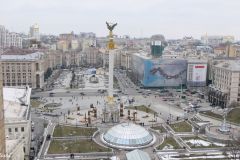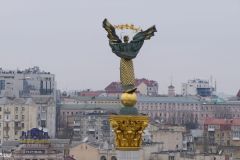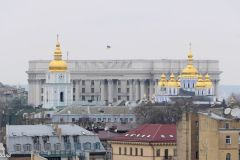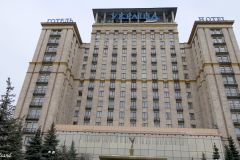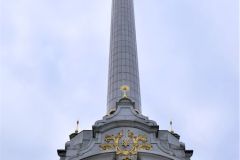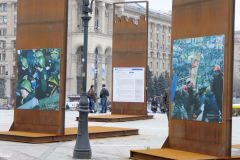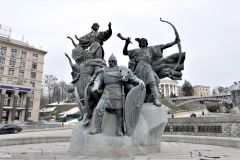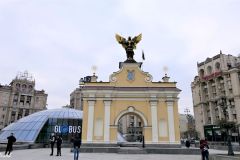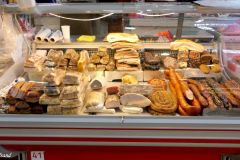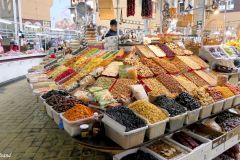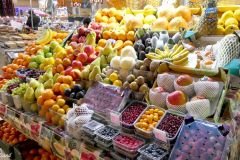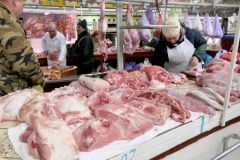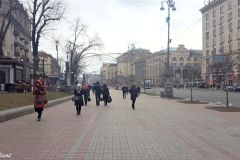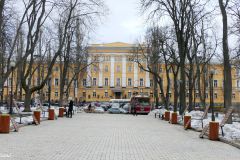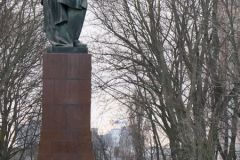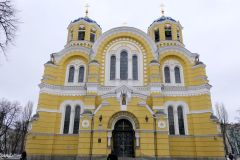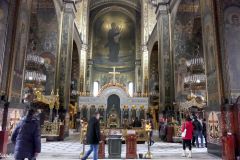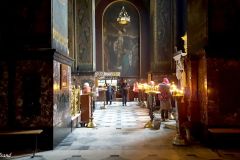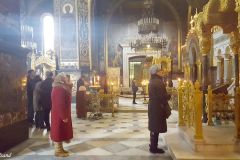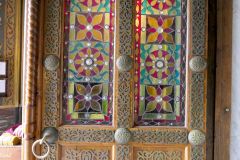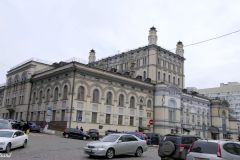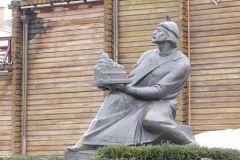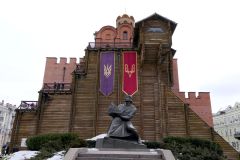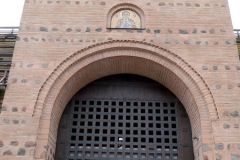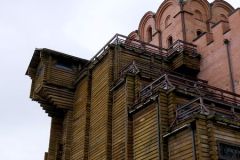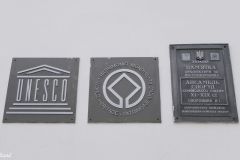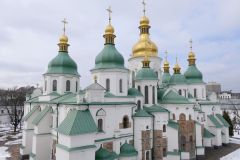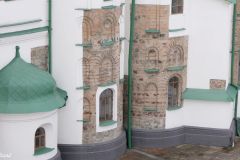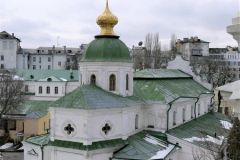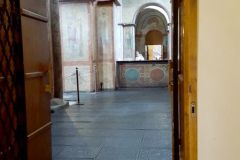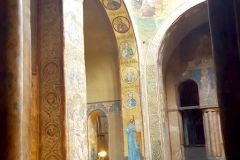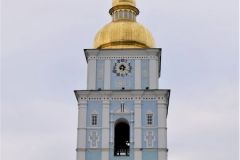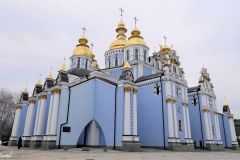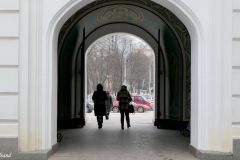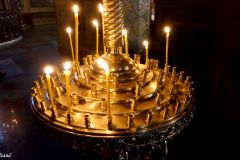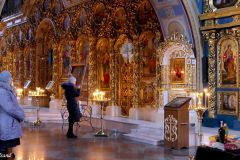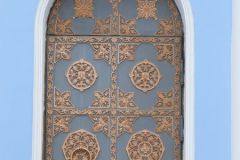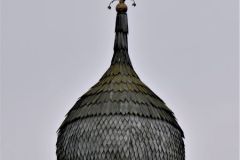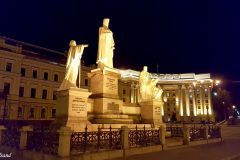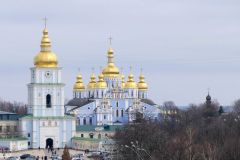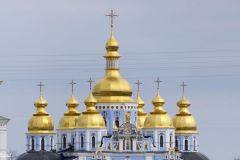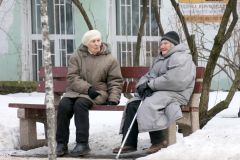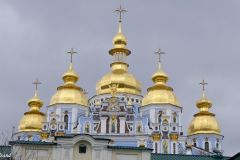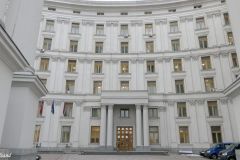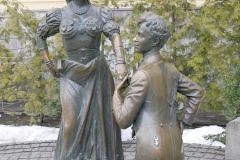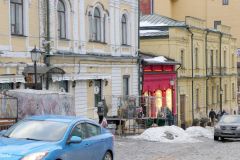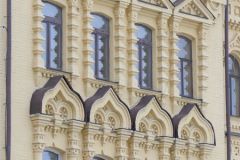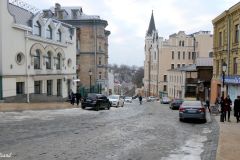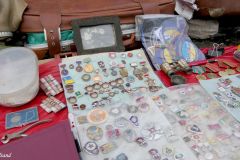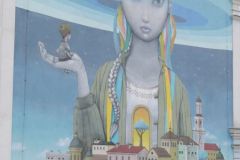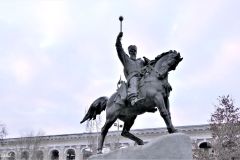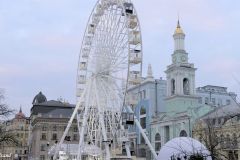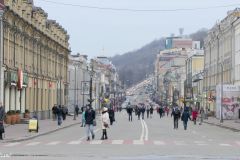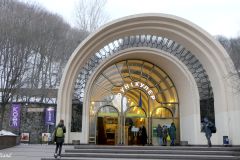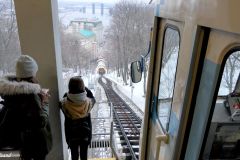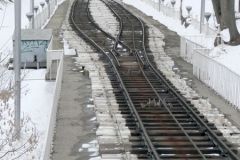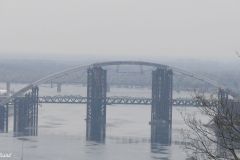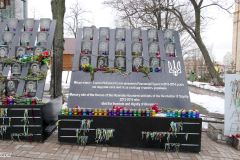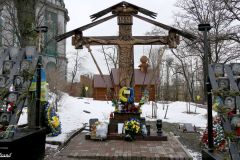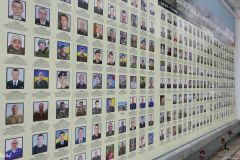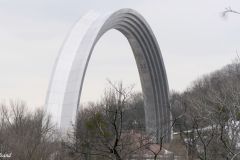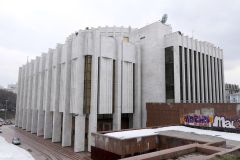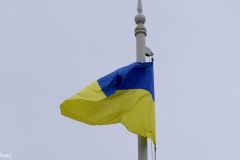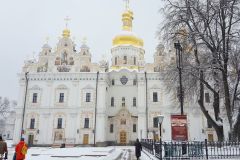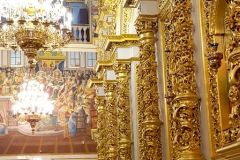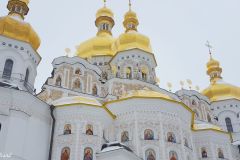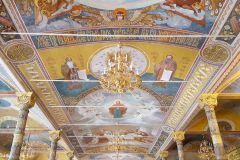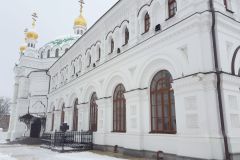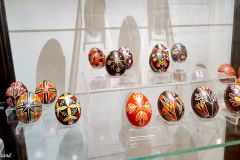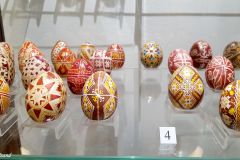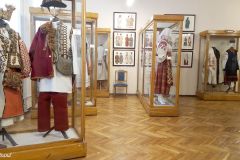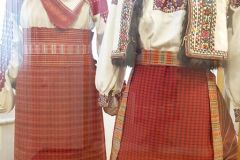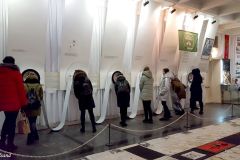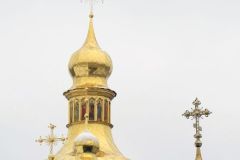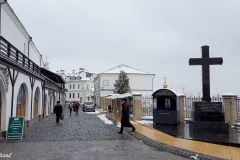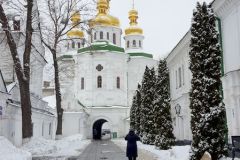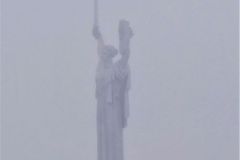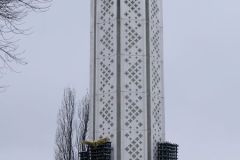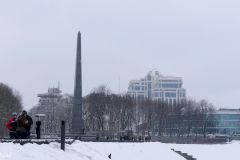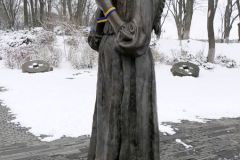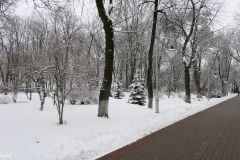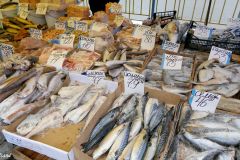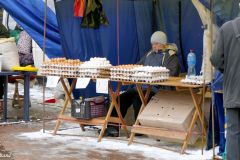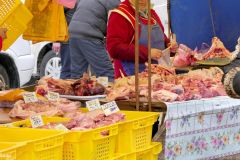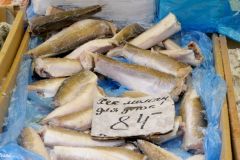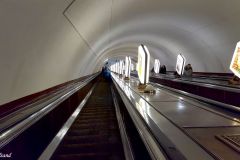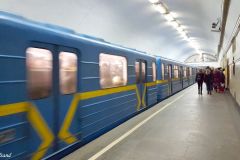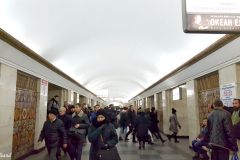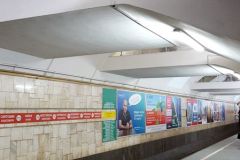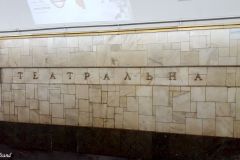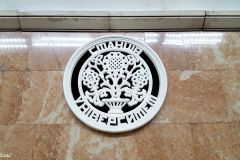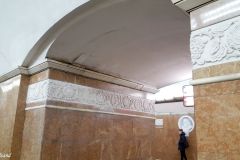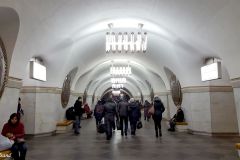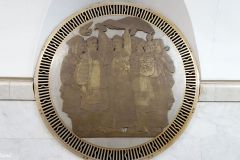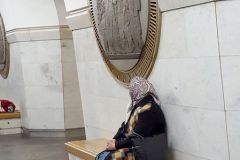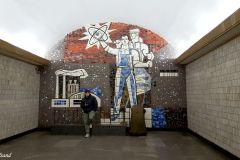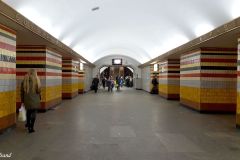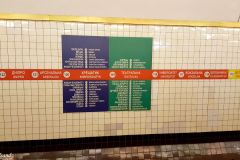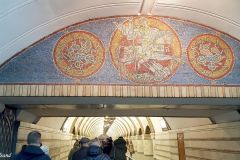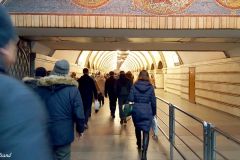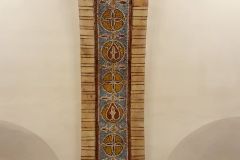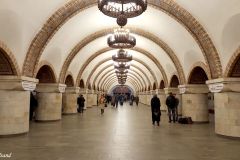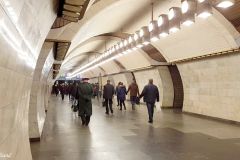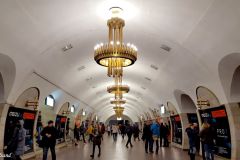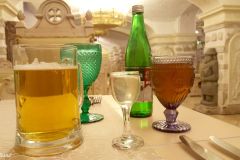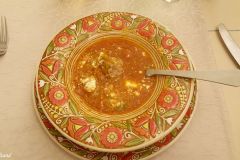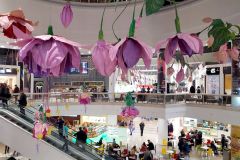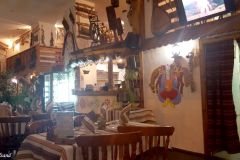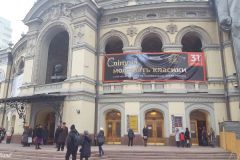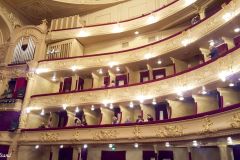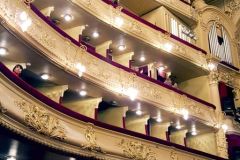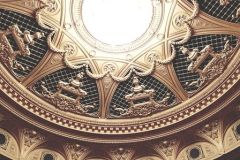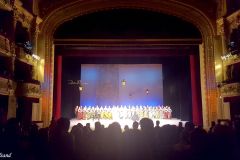The Ukrainian capital is one of Europe’s largest cities, with a long and proud religious and secular history. As a destination Kyiv has plenty of sights to keep you occupied. Join me for a walk in the streets, into churches and on a ride to some quite spectacular metro stations.
Background
Kyiv, often written Kiev, is the capital of Ukraine and holds a population of about three million making it the seventh most populous in Europe. It is situated on the banks of the Dnieper (Dnipro), Europe’s fourth longest river, which drains in the Black Sea. In short it is a big city. However, most sights attracting visitors are concentrated on a comparatively small area on the west bank of the river.
Kyiv grew out of a modest commercial centre around the 5th century. It prospered in the subsequent centuries on the trade route between Scandinavia and Constantinople. Unfortunately it was completely destroyed by invading Mongols in 1240 and was set back for hundreds of years. Kyiv was later a provincial town under the Grand Duchy of Lithuania, later Poland and finally Russia. By the end of the 19th century the city became part of the Russian industrial revolution. After the Bolshevik revolution in Russia, Kyiv became capital of the Ukrainian Soviet Socialist Republic. Since 1991 it is the capital of an independent Ukraine.
Kyiv’s religious role
The city has played a major religious role in Eastern Orthodox Christianity for more than a thousand years. Its major and sacred sites have survived periods of decline and invasions. Today they are protected also by UNESCO as a World Heritage Site. Read my short article about this:
World Heritage #0527 – Kyiv: Saint-Sophia Cathedral and Related Monastic Buildings, Kyiv-Pechersk Lavra: Kyiv is a city filled with high, gilded, dome-shaped church spires, some of which belong to the two historically very important complexes included on the List.
Map of attractions in Kyiv
This article will deal with sights inside Kyiv’s historical city centre. I made a map before going, added places while I was there and finished it when I returned home. Feel free to expand the map into a new window, click the markers and follow my suggested walk.
The map also includes a layer with Soviet Era Architecture. Unfortunately I did not have time enough during my three nights here to see all, but I managed to get around to at least some of them. My source of information was found in a blog post, which again builds on a page on Soviet Modernism.
My suggested walk (about 9 km)
A famous hotel, an even more famous square and a lovely market
I stayed at the Hotel Ukraine. It opened in 1961 and is located on a hill at the far end of the Maidan, the Independence Square in the heart of the city. It is a perfect location and from my room on one of the top floors I had a superb view of the city. This hotel is quite affordable too.
Any visit to Kyiv would include a visit to Maidan, either on top or the subterranean shopping mall. The square has in our century seen several huge demonstrations taking place, during the more or less peaceful revolutions of Ukraine. Turning left down the wide Khreschatyk street we immediately discover that Kyiv is and for long has been a major European city.
I have always been fond of large indoor market halls, places where they sell fresh produce like fish, meat, vegetables, flowers and so on. I found a new favourite at the Besarabsky Market which was constructed in 1910-1912. Inside the market I bought some slices of cured meat and had a taste of Beluga caviar, or at least something that was presented as being the real thing.
Uphill to a cathedral, an opera house and a big gate
From here I left the Khreschatyk and went straight uphill until I found peace and quiet at the Taras Shevchenko Park, admiring the University buildings surrounding it. A little further up the street I finally arrived at one of Kyiv’s major attractions, the St. Volodymyr’s Cathedral. Its beautiful yellow painted exterior is only matched by its colourful interior. It was amazing for a non-Orthodox to watch believers walking around, lighting candles, kissing icons, and praying in front of more icons.
Next I found my way past the National Opera of Ukraine, an impressive building which I would later in the evening return to for an even more impressive interior and a wonderful opera performance.
Not far from the opera building we encounter the Golden Gate. This gate was originally built by city founder Yaroslav the Great, as part of a defensive network around Kyiv in the early 11th century. Nothing of the original has survived and indeed the claimed restoration of it has become basis for much debate. It is an imposing structure, containing a museum which I skipped, and is being promoted by the authorities as something almost equivalent to the UNESCO sites. I interpret this as a post-independence nation-building effort on part of the Ukrainian authorities.
A World Heritage Cathedral
Anyway, I was now heading for the St. Sophia’s Cathedral, or rather a large complex which includes the cathedral. It is very much a part of the UNESCO site, and recognised throughout Ukraine and the world as a true wonder. Facing a large square stands a huge bell tower which one may climb to the top, or only to the platform with the bells. Great views of the cathedral complex and the rest of the city centre is the reward. The inside of the complex has several structures open to the public, and I went into some of them to watch the exhibitions. By far the most interesting was the cathedral itself. Think of it: Its first foundations were laid a thousand years ago.
The monastery with the golden dome
From the bell tower there is a clear view over to the St. Michael’s Golden-Domed Monastery. It is a magnificent view gaining even better impressions as you get closer. The complex includes several buildings. I suggest you walk around the cathedral for a look at the wooden-roofed refectory of St. John at the back and the other buildings. Now, be aware that the cathedral was actually demolished by the Soviets in the 1930s. Evidently it has been rebuilt, in 1999, after the Ukrainian independence.
Like St. Sophia this religious complex has a thousand years old history. Unlike St. Sophia which today is a museum, this is a functioning monastery. There are monks walking around, there are songs to be heard inside the cathedral and there are worshippers coming by for a soul searching experience.
More memorials and a descent
Outside the front gate of the monastery there is a low wall with hundreds of portrait photographs. This is The Wall of the People’s Memory of the Victims of Ukraine for 2014-2017, meaning names and portraits of those who have been killed in the still ongoing civil war, predominantly in the eastern part of the country.
The upper station of the Kyiv funicular is right next to the Monastery, but I preferred taking it the other way. Instead I went down to the beautiful St. Andrew’s Church, closed when I arrived, and down the winding street called St. Andrew’s Descent. This is a touristy part of town but it doesn’t really matter. At the bottom of the descent I found my way back to the lower station of the Kyiv funicular and took it to the top.
Another hill
From here one may go for a walk in the park on Volodymyrska Hill. Actually there are parks stretching along the west bank of the Dnieper for several kilometres. From here you can have a look at the huge Friendship of Nations Arch and walk down to the cultural centre called Ukrainian House.
This walk stops at another memorial, somewhat unofficial looking but nonetheless important with regards to modern Ukrainian history. It is called the Memory site of the Heroes of the Heavenly Hundred activists of the Revolution of Dignity 2013-2014. It commemorates the victims from the Maidan demonstrations during that period.
More sights
The cave monastery
There are several other points of interest marked on the map. I took a bus south to the Kyiv Pechersk Lavra, the cave monastery overlooking the river. It is a huge complex and is combining with St. Sophia’s in making up Kyiv’s inscription on the UNESCO World Heritage List. Apart from the large Uspenskyi Cathedral there are several museums worth looking into on the Upper Lavra area. I would recommend the Refectory, a lovely place with a combined chapel and former dining room with extravagant paintings in the ceiling.
Next is the Museum of Ukrainian Folk Art and the very odd place called Museum of Microminiatures. Those miniatures are extremely small even when they are studied under a microscope.
Lower Lavra is closer to the river and contains the catacombs or caves in which the monks used to hide in times of trouble or simply to meditate and pray. We are led through a small section of the complex, there is almost no light but here and there we discover a monk in a whispering conversation with a worshipper. The cave system was so secret and so vast that rumours had it that they stretched all the way to Moscow.
Along the river
From the Pechersk Lavra I went on another walk towards the city centre, passing by more parks and the symbolically strong Ukrainian Genocide Holodomor Memorial Museum. There is an underground memorial hall and a monument on top. The Holodomor is used in Ukraine to describe the largely man-made (some say Stalin-made) famine in 1932-33 in which some 3, 5, 7 or more million people perished directly by starvation or indirectly as a consequence. Frankly, I was unaware of this disaster during my visit but read up on it after I got home.
I continued my walk and ended up at the Arsenalna metro station. On the opposite side of the traffic junction there is a large open-air market with groceries, fish and meat.
Sightseeing on the metro stations of Kyiv
I made Arsenalna my first stop in an effort to localise Soviet era metro stations. I remembered how the metro stations of Moscow had stood out as extremely different, almost like monuments of art, compared to the ones I have seen in the West. Before arriving in Kyiv I had read that some of the same heritage is also found here. I had not made proper research so I simply went into the world’s deepest metro station, the Arsenalna (105.5m) and left the train on stations which looked interesting. I changed lines now and then in the course of the next hour or so.
From Kyiv I went on to Minsk in Belarus for even more wonderful metro stations.
Stay and eat
This was my first time to Kyiv and Ukraine. I spent three nights here, at the Hotel Ukraine but there are many more places to stay. There are two restaurants marked on the map I would like to recommend. They both serve traditional Ukrainian cuisine: The Knyazhyy Hrad and the Korchma Taras Bulba. Full meals with drinks and everything cost me less than 20 EUR. Get ready for a variety of very good soups, dumplings, fat, bread.
My opera ticket cost me 10 EUR for a very good seat. There are entrance fees to the largest museums but they are affordable to most foreigners.
Getting around
Getting around in Kyiv is very easy. Street sign are in Cyrillic and Latin letters, people are friendly and they speak English. Local transport on bus and metro is both easy and cheap. Uber is present in Kyiv and I used their service on a couple of occasions with no complaints.
Some readers are conscious about their personal safety. To this I would just say that Kyiv seems to be a lot better than many other European big cities (which again are a world apart from the North American ones). Being a country in an actual civil war, Kyiv looked surprisingly demilitarised. Last year in Brussels, Belgium, I had quite the opposite impression.
During my visit in March 2018 I used Kyiv as a base for a full-day excursion into the nuclear disaster zone around Chernobyl. We all remember the terrible incident in 1986 when reactor four blew up. Read the article about that visit.
From Kyiv I continued my trip to Minsk in Belarus for the remainder of my Easter holiday.
